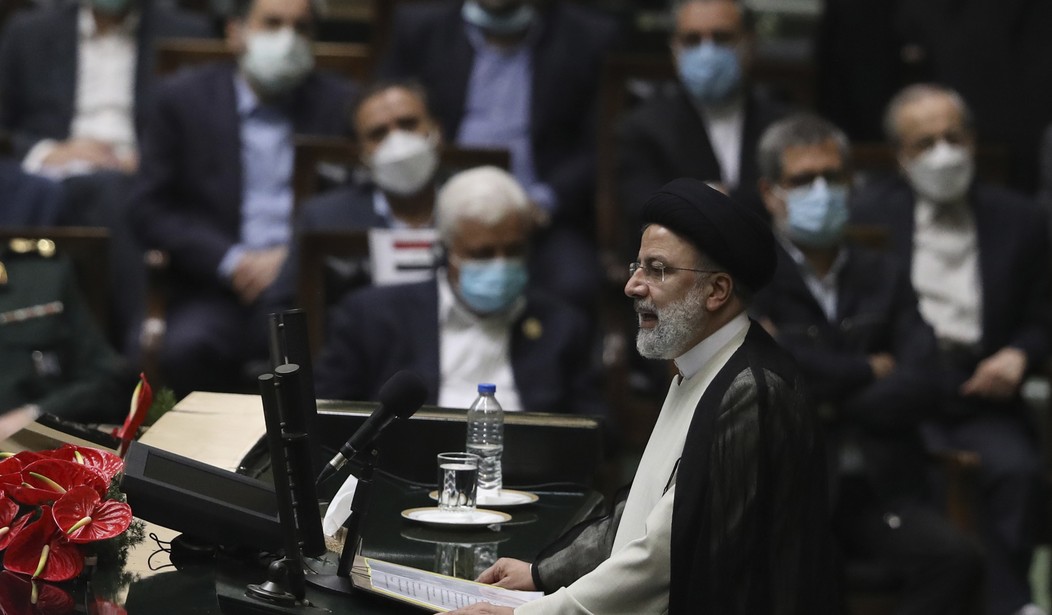In recent weeks, Iran has increased the production of "highly enriched" uranium and is approaching the levels required to produce nuclear warheads, according to a report released on Tuesday from the International Atomic Energy Agency (IAEA).
Iran has boosted its production of highly enriched uranium after a slowdown earlier this year, the U.N.’s nuclear watchdog said in a report on Tuesday, according to Reuters and the Associated Press.
Iran is currently enriching uranium up to 60%, which is reaching the 90% needed for weapons, at its Pilot Fuel Enrichment Plant (PFEP) in the Natanz complex and at the Fordow Fuel Enrichment Plant (FFEP).
Rafael Mariano Grossi, the Director General of the International Atomic Energy Agency (IAEA), said in the report that Iran had "increased its production of highly enriched uranium, reversing a previous output reduction from mid-2023."
Iran is known to be sponsoring terror operatives throughout the Middle East, including supporting militias in Iraq and Syria that have carried out attacks on U.S. troops and facilities in the region. Iranian military commanders have been working directly with those groups.
See Related: Report: Israel Follows Up Killing of Senior Iranian Commander in Syria, Dispatches 11 More in Damascus
The IAEA report notes that the production of highly enriched uranium has increased from 3 kilograms per month in June to 9 kilograms per month at present. While the current enrichment has moved up to 60 percent (by treaty, Iran is limited to 3.67 percent), the production of a fission warhead requires 90 percent enrichment. The IAEA estimates that, once it's enriched to 90 percent, Iran has enough fissile material to produce three warheads.
The United States is, of course, "greatly concerned."
A State Department spokesperson told Fox News Digital they are "greatly concerned" by the report, and that Iran has "no credible civilian justification for enrichment up to 60%."
"Iran’s nuclear escalation is all the more concerning at a time when Iran as well as Iran-backed militant groups and Iran’s proxies continue their dangerous and destabilizing activities in the region," the State Department spokesperson said. "This includes the latest drone attack against U.S. personnel in Iraq, Houthi attacks against commercial shipping vessels in the Red Sea as well as Iran’s latest armed-drone attack against a chemical tanker in the Indian ocean."
By comparison, Israel is estimated to have at least 90 nuclear weapons on hand, with the capacity to deliver them by aircraft, the Jericho ballistic missile, or by submarine-launched cruise missiles. Under the Begin Doctrine, Israel has taken the stance to deny any potential enemies' capacity to produce and field weapons of mass destruction, including nuclear weapons. Israeli Prime Minister Netanyahu is on record warning Iran-supported Hezbollah against any invasion of Israeli territory following the Oct. 7th attacks by Hamas, and has threatened an overwhelming response:
While visiting troops in northern Israel on Sunday, Netanyahu said if Hezbollah were to launch a war and invade Israel, "it will make the mistake of its life. We will cripple it with a force it cannot even imagine, and the consequences for it and the Lebanese state will be devastating."
An Iranian device, however, is not limited to use against Israel. Iranian nationals with ties to terror groups have been detained in the United States.
See Related: NEW: ICE Detains Iranian National With Terror Ties at US-Canadian Border
Production of a device does not necessarily imply weaponization, defined as producing a warhead capable of being delivered by aircraft or missiles. A weapon could, however, be delivered by ship, and detonated in a harbor. Iran certainly has this capability, and the presence of Iranian operatives in the United States should be taken seriously.















Join the conversation as a VIP Member